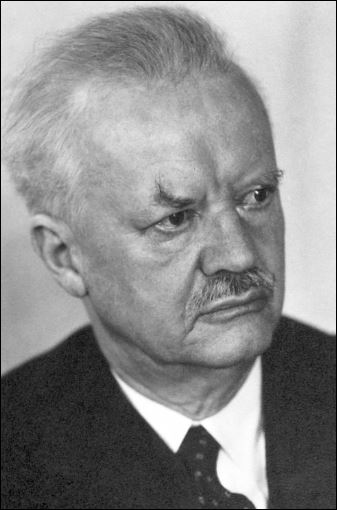Why was Hans Spemann Awarded the Nobel Prize for Physiology or Medicine in 1935?
Hans Spemann: Nobel Laureate for Pioneering Discoveries in Embryonic Development (1935)
Hans Spemann, a German embryologist, made remarkable contributions to the field of developmental biology during the early 20th century. Renowned for his groundbreaking research on embryonic development and the concept of embryonic induction, Spemann played a pivotal role in advancing our understanding of how organisms develop from a single fertilized egg. In recognition of his exceptional work, he was awarded the Nobel Prize for Physiology or Medicine in 1935. This article explores the reasons behind Spemann’s prestigious honor and highlights his remarkable scientific breakthroughs.

Organizer and Embryonic Induction:
Hans Spemann’s Nobel Prize was primarily awarded for his investigations into the concept of embryonic induction. Spemann and his colleague Hilde Mangold conducted a series of influential experiments in the 1920s that revealed the critical role of a specialized group of cells, later named the organizer, in embryonic development.
Through their experiments on amphibian embryos, Spemann and Mangold demonstrated that the organizer cells have the remarkable ability to influence the development of neighboring cells. This process, known as embryonic induction, results in the formation of different tissues and organs in the developing embryo.
Significance for Developmental Biology:
Spemann’s research revolutionized our understanding of how different cell types and tissues are specified during embryonic development. His concept of embryonic induction provided a key framework for studying the complex processes that shape the formation of the body plan in animals.
Furthermore, Spemann’s work led to the identification of important signaling molecules, such as growth factors and morphogens, which play crucial roles in regulating cell fate and tissue patterning during embryogenesis. His findings laid the foundation for subsequent investigations into the molecular mechanisms underlying embryonic development.
Impact on Regenerative Medicine and Tissue Engineering:
Hans Spemann’s contributions to developmental biology have far-reaching implications beyond basic science. His research on embryonic induction and the organizer cells has informed the fields of regenerative medicine and tissue engineering, offering insights into the potential for guiding cell differentiation and tissue formation.
By understanding the principles of embryonic development and the mechanisms of tissue induction, scientists have been able to explore strategies for regenerating damaged or lost tissues and organs. Spemann’s work has contributed to the development of novel approaches in tissue engineering, providing a foundation for the creation of functional, bioengineered tissues for medical purposes.
Recognition and Legacy:
Hans Spemann’s Nobel Prize in 1935 celebrated his exceptional scientific achievements and the transformative impact of his research in the field of developmental biology. His discoveries regarding the organizer cells and embryonic induction revolutionized our understanding of how organisms develop from a single fertilized egg.
Spemann’s pioneering work continues to inspire advancements in developmental biology and regenerative medicine. His concepts and experimental techniques have laid the groundwork for ongoing research into tissue patterning, cell fate determination, and the potential for tissue regeneration.
Hans Spemann’s Nobel Prize in 1935 honored his groundbreaking contributions to the field of developmental biology and his pivotal role in uncovering the mechanisms of embryonic induction. His research on the organizer cells provided a conceptual framework for understanding the processes that shape the development of organisms.
Spemann’s legacy continues to guide research in developmental biology and regenerative medicine, inspiring ongoing investigations into the complexities of embryonic development and the potential for tissue regeneration. His work serves as a testament to the power of scientific inquiry and the pursuit of knowledge in unraveling the mysteries of life’s beginnings and advancing our understanding of biological processes.




